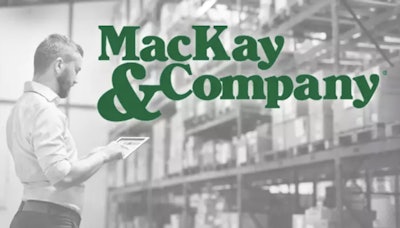
I recently read an article by the Center for Sustainable Energy, “The State of Electric Vehicle Adoption in the U.S. and the Role of Incentives in Market Transformation.”
The article cites facts about the state of electric vehicle (EV) adoption, mostly in passenger vehicles. The article got me thinking (even more) about the adoption of EVs in commercial trucks. The penetration of EVs in commercial vehicles is practically non-existent. Why is the EV market share in commercial vehicles so low?
Let’s start by looking at some statistics. CALSTART profiled the EV market for trucks in its report, “Zeroing in on Zero-Emission Trucks.” Key findings from the June 2025 report include:
- 52,722 zero-emission trucks had been deployed in the U.S. (46,677 cargo vans; 1,367 medium-duty step vans; 726 medium-duty trucks; 2,089 heavy-duty trucks; 113 refuse trucks; and 1,750 yard tractors).
- Top five states with EV deployments: California (7,684); Texas (5,009); Florida (4,022); New York (3,253); and Maryland (2,508).
If it isn’t obvious, there are very few EVs used by commercial fleets and most are used in light-duty applications. In fact, 89% of the EV deployments are cargo vans. Those are mostly Class 2 and 3 vehicles.
[RELATED: Analyzing the details of California early ZEV sales success]
MacKay & Company estimates there are about 15.1 million Class 2 and 3 commercial vehicles in the U.S., so the penetration of EVs in the light-duty market is less than 1%.
Penetration rates are even less in medium- and heavy-duty truck applications. With just over 6,000 medium- and heavy-duty EVs deployed in the U.S. (out of a universe of just over 6 million Class 6-8 trucks), the penetration is less than one-tenth of one percent.
Clearly, EV adoption has been extremely slow. Most fleets haven’t justified the investment in EVs for a multitude of reasons:
- Limited range. Current EV battery technology has a limited range, forcing usage to applications with short distances and daily return to base operations to charge batteries. Drayage, school/transit bus and last-mile delivery are applications where EVs are utilized most often.
- Limited charging infrastructure outside of fleet premises.
- Limited subsidies supporting fleet investment in charging stations at the fleet owned premises.
- Time to charge batteries leads to significant downtime for drivers.
- Higher insurance costs.
- Lack of parts and repair facilities.
- Higher vehicle purchase price.
- Regulatory uncertainty.
- Resale value uncertainty.
At MacKay & Company, we released our Technology Monitor study in 2024, which surveyed fleets about their knowledge, use and plans to use new power train technologies. In our survey, 65% of fleets said they would not purchase alternative powered vehicles without grants or incentives.
[RELATED: TPS reader survey shows dealer pessimism toward EVs on the rise]
Without government subsidies, most fleets aren’t even considering EV or other alternative powered vehicles.
And what about regulatory uncertainty?
The California Air Resources Board’s (CARB) Advanced Clean Trucks (ACT) rule required truck OEMs to sell an increasing percentage of medium- and heavy-duty vehicles from 2024-2035, with sales of vehicles with internal combustion engines (ICE) being capped if EV sales mandate goals are not met. Other states had committed to the ACT rule too, though many delayed enforcement and implementation earlier this year due to adoption challenges.
But ACT hit a roadblock, then a wall, in recent weeks. The U.S. Senate revoked EPA waivers for California's ACT and low-NOx Omnibus rules in May 2025 and President Trump signed the resolutions last week.
These waivers, initially granted to the California Air Resources Board (CARB) in 2024, allowed California to set stricter emissions standards for trucks and buses than federal standards. Coupled with the cold feet shown by opt-in states, it appears EV adoption the commercial vehicle market has stumbled.
[RELATED: Trump officially kills California emission regs]
Currently, EV adoption in commercial vehicles is largely driven by policy, not by business case. Adoption will slowly increase over time, especially as future technologies increase battery range.
EVs should be viewed as one of many solutions to reduce vehicle emissions, not a “one-size fits all” solution. Clean diesel, hydrogen electric, natural gas, fuel-electric hybrids and other alternative technologies will compete for market share.
My guess is it will be decades before the use of ICE vehicles is supplanted by EVs or other alternative powertrains.









